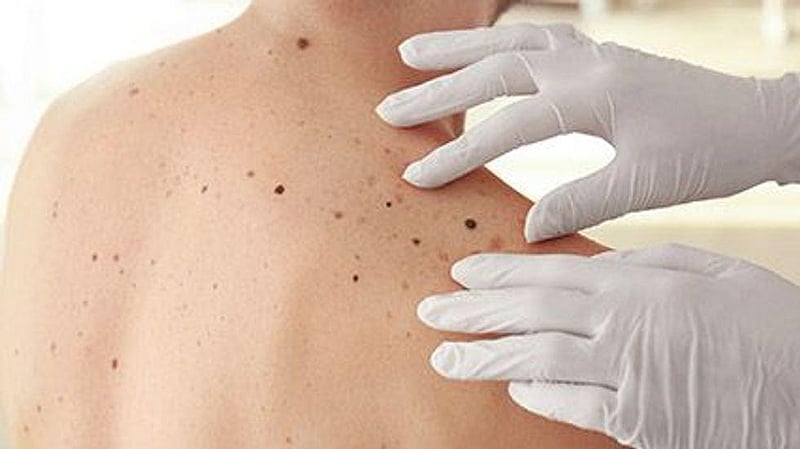Get Healthy!

- Posted August 22, 2021
Spotting the Signs of Deadly Melanoma Skin Cancers
Regular skin checks to look for signs of melanoma could save your life.
Self-exams for the deadliest type of skin cancer should be done at least once a month in a well-lit room in front of a full-length mirror and also with a hand mirror for hard-to-see areas, said Dr. Arun Mavanur, a surgical oncologist.
You also need to get checked by a doctor if you have risk factors for melanoma, such as: unprotected or excessive exposure to ultraviolet (UV) light; lesions or moles; a family history of melanoma; a personal history of skin cancer; a weakened immune system; fair skin, freckling and light hair.
"Generally, if you're at increased risk for melanoma -- especially if you have lesions or moles -- you should be examined by a dermatologist at least once a year, if not twice a year," said Mavanur, who treats patients at the the Alvin & Lois Lapidus Cancer Institute at LifeBridge Health in Baltimore.
When doing a self-exam, he recommends you look for:
- a sore that bleeds or doesn't heal after a few weeks.
- a mole, wart-like growth, bump or spot that's new or changing in size, shape and color. (It can appear brown, black or multicolored.)
- a spot, sore or patch that continuously itches, crusts or bleeds.
If you detect these things, tell your primary care doctor and seek an immediate appointment with a dermatologist, Mavanur advised.
"Melanoma can happen at any age," he said. "It tends to be more common as one gets older because of sun damage to the skin over time."
The age at which a person should start seeing a dermatologist depends on their situation.
"For example, some people are exposed to the sun more often and incur sun-induced damage earlier than others, so those people should probably see a dermatologist sooner," Mavanur said.
"For someone with an average risk, probably in your mid-40s would be a good time to start, because that's when you start accumulating enough skin damage over time that you should see a dermatologist on a routine basis," he added.
More information
The U.S. National Cancer Institute has more on melanoma.
SOURCE: LifeBridge Health, news release, Aug. 12, 2021

